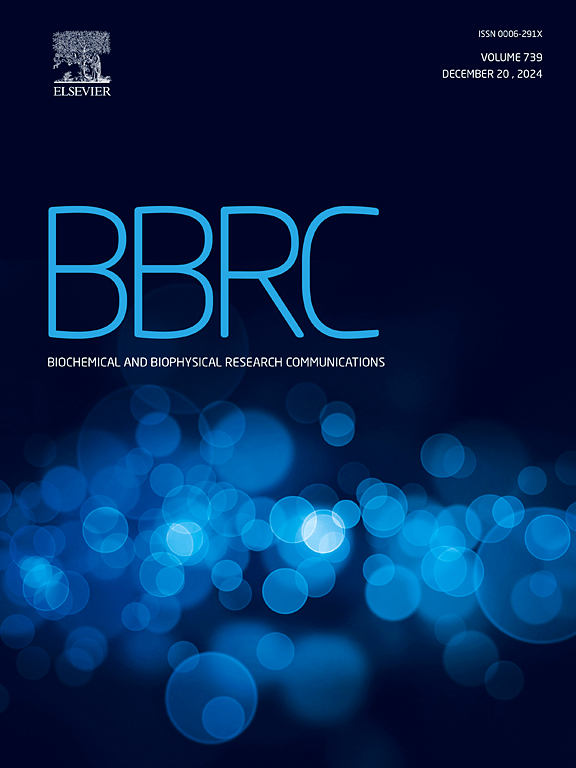Characteristics of ergothioneine distribution across skeletal muscles and adipose tissues
IF 2.5
3区 生物学
Q3 BIOCHEMISTRY & MOLECULAR BIOLOGY
Biochemical and biophysical research communications
Pub Date : 2025-06-14
DOI:10.1016/j.bbrc.2025.152210
引用次数: 0
Abstract
Ergothioneine (EGT), a food-derived amino acid, is distributed to various organs via the carnitine/organic cation transporter, OCTN1. However, the distribution characteristics of EGT across different skeletal muscles and adipose tissues remains unexplored. This study evaluated the distribution of EGT and OCTN1 mRNA expression in the soleus, gastrocnemius, plantaris muscle, epididymal white adipose tissue (eWAT), and interscapular brown adipose tissue (iBAT) of middle-aged C57BL/6 J wild-type male mice, which were orally administered 20 mg/kg of EGT once daily for up to 56 days. EGT was distributed at significantly higher concentrations in the soleus than in the gastrocnemius and plantaris muscles. Similarly, the mRNA level of OCTN1 was significantly higher in the soleus muscle. Regarding adipose tissue, EGT was distributed at significantly higher concentrations in iBAT than in eWAT. The soleus and iBAT may have a higher risk of oxidative stress, which could be a probable reason for the higher distribution of the antioxidant EGT. This study revealed the unique characteristics of EGT distribution in skeletal muscles and adipose tissues, providing a solid foundation for future studies on EGT health strategies.

麦角硫因在骨骼肌和脂肪组织中的分布特征
麦角硫因(EGT)是一种食物来源的氨基酸,通过肉碱/有机阳离子转运体OCTN1分布到各个器官。然而,EGT在不同骨骼肌和脂肪组织中的分布特征仍未被探索。本研究评价了EGT和OCTN1 mRNA在C57BL/6 J野生型中年雄性小鼠的鲽鱼肌、腓肠肌、跖肌、附睾白色脂肪组织(eWAT)和肩胛间棕色脂肪组织(iBAT)中的表达分布,这些小鼠每天口服EGT 20 mg/kg,持续56天。EGT在比目鱼肌的分布浓度明显高于腓肠肌和跖肌。同样,OCTN1 mRNA水平在比目鱼肌中显著升高。在脂肪组织方面,EGT在iBAT组的分布浓度显著高于eWAT组。比目鱼和iBAT可能有更高的氧化应激风险,这可能是抗氧化剂EGT分布较高的原因。本研究揭示了EGT在骨骼肌和脂肪组织中分布的独特特征,为EGT健康策略的进一步研究提供了坚实的基础。
本文章由计算机程序翻译,如有差异,请以英文原文为准。
求助全文
约1分钟内获得全文
求助全文
来源期刊
CiteScore
6.10
自引率
0.00%
发文量
1400
审稿时长
14 days
期刊介绍:
Biochemical and Biophysical Research Communications is the premier international journal devoted to the very rapid dissemination of timely and significant experimental results in diverse fields of biological research. The development of the "Breakthroughs and Views" section brings the minireview format to the journal, and issues often contain collections of special interest manuscripts. BBRC is published weekly (52 issues/year).Research Areas now include: Biochemistry; biophysics; cell biology; developmental biology; immunology
; molecular biology; neurobiology; plant biology and proteomics

 求助内容:
求助内容: 应助结果提醒方式:
应助结果提醒方式:


